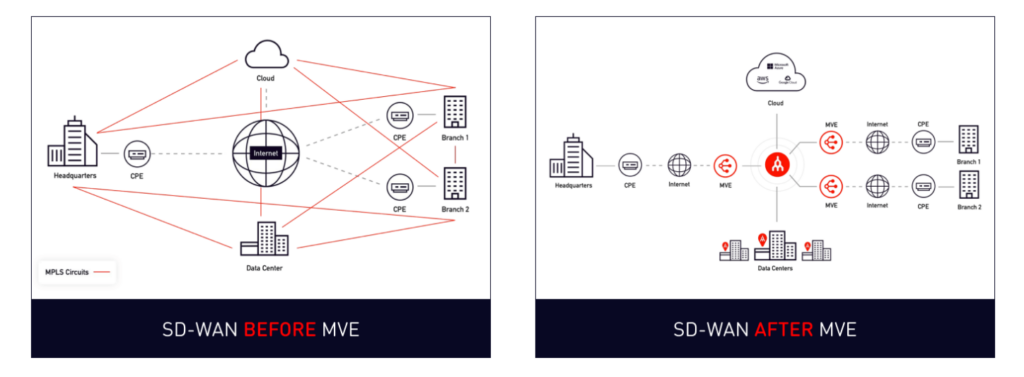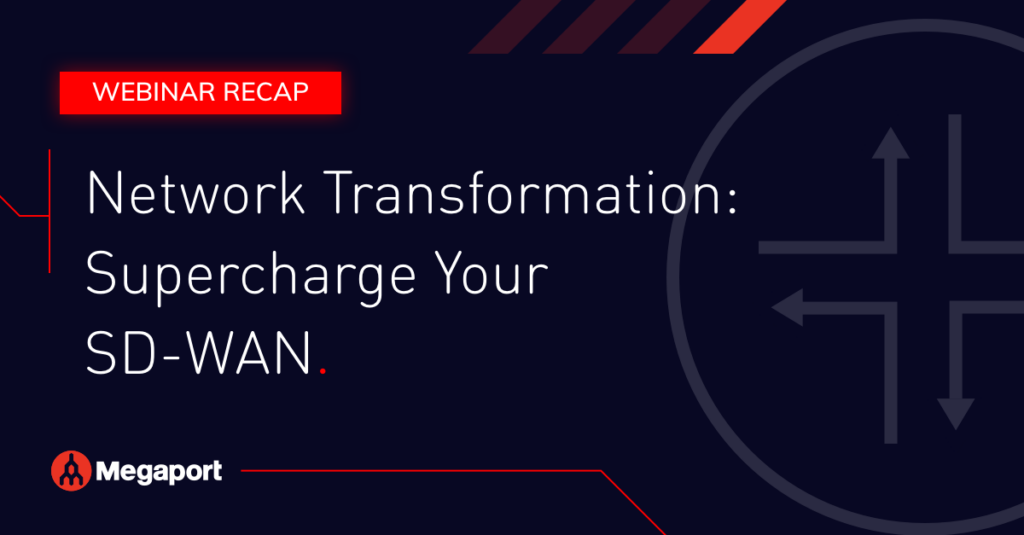
The Real Cost of High Network Latency
- February 18, 2022
Having unreliable network performance could impact your business in more ways than you think. Here’s how to reduce latency.
When we talk about network latency, we’re referring to more than just the occasional lag or intermittent connectivity issues; the speed and consistency of your network performance can be the difference between your enterprise making and losing money.
We break down the real impact high network latency can have on your business, and share a few helpful tips on how to reduce latency and improve network reliability and performance.
Why latency is so important
When you leave your network latency to chance, the business impact can extend to your bottom line. You can expect:
- Higher cloud costs. Delays, lagging, and downtime are expensive – so expensive, in fact, that Gartner estimates the average cost of downtime for a business can be as much as USD$5,600 per minute .
- Inconsistent network performance. High latency doesn’t just equal slower speeds, it also equals inconsistent speeds. There’s no way of knowing when, or how badly, your latency will fluctuate.
- Impaired business operations. In a cloud-native world where real-time network processes are critical for organizations to function, high latency can be devastating to the productivity of a business. In industries like gaming or eCommerce, for example, latency can mean that in-game purchases don’t happen and shopping carts are abandoned.
Now that you know the importance of having low, consistent network latency, how do you get it?
Reducing your network latency
Avoid the public internet
Many companies still use the public internet for their cloud connectivity; a common band-aid is to use internet-based VPN tunnels. But while VPN tunnels can provide some protection for data in transit, they still place users at the mercy of the internet’s instability. This can result in slow and unreliable connectivity in times of peak demand or high bandwidth usage, as well as the requirement for constant outage mitigation from IT departments.
Reducing reliance on the public internet is the most significant step you can take toward improving your latency – but what do you switch to?
Using a private network backbone gives your enterprise access to connectivity unaffected by the fluctuations of public internet, resulting in a far more stable and secure connection. A good private connectivity provider will also have a highly redundant network that reroutes your workloads in case of outages.
Learn more about the performance and cost benefits of private connectivity here.
Megaport’s private Software Defined Network (SDN) is an alternative to using the public internet, with a 100 percent SLA and ISO/IEC27001 certification, the international standard for information security management. With hundreds of Megaport enabled locations worldwide, you can have high global redundancy for stable latency.
Learn how Framestore transformed their efficiency by switching from VPN tunnels to Megaport.
Choose a scalable connectivity provider
When enterprises sign up with a traditional connectivity provider, they’re required to lock into a long-term contract with a set bandwidth. This leaves them with a difficult decision: Do they choose bandwidth that is lower and therefore more affordable, or bandwidth that will account for the largest workloads they might need to accommodate, but is more expensive? The former means latency and business operations will be severely impacted in times of peak demand; the latter means they’re severely overpaying for bandwidth when they’re not using it. But there’s a way to get the best of both – by choosing a scalable connectivity provider.
By provisioning connectivity with a scalable provider, you’ll gain the ability to adapt to real-time traffic fluctuations while paying only for what you use. Plus, you’ll future-proof your network by giving it the agility to grow over time.
With Megaport, you can provision and scale your global network in seconds with point, click, and connect functionality via the Megaport portal . Need more bandwidth for an hour? Want to scale it back for the weekend? Dial it up to support your business in critical moments, then dial it down to reduce your costs.
Learn more about the benefits of a scalable enterprise network.
Extend your network to the edge
Enterprises can significantly reduce their latency by deploying scalable private connectivity, but we haven’t yet covered the entire journey to and from the cloud. There’s still one more component you should account for – the last mile.
The consensus among industry analysts is that SD-WAN is the next (well, current) big thing; we’ve covered it numerous times . If you haven’t considered SD-WAN for your enterprise yet, or if you’ve implemented SD-WAN and haven’t explored ways like Software-Defined Interconnection (SDCI) to extend your SD-WAN fabric to the very edge of your network, closer to your end-users, there isn’t a more compelling reason to adopt it than the latency improvements you’ll likely see.
By streamlining your enterprise connectivity from branch to cloud, an SD-WAN solution with optimized connectivity creates a more reliable, low-latency network to minimize last-mile bandwidth bottlenecks. Combined with its tightened security and simplified network management, SD-WAN as part of a larger SASE solution can also be a game changer.
To optimize your SD-WAN connectivity, reducing its reliance on public internet transit, you can use a Network Function Virtualization hosting service like Megaport Virtual Edge (MVE). By providing direct, private cloud connectivity via Megaport’s SDN, MVE can lower latency and reduce hops and jitter, making your WAN more reliable and performant. Integrated with the industry’s top SD-WAN providers, MVE also helps reduce cloud egress costs by riding private connectivity to and from the edge.

Virtualize your multicloud
With 95 percent of businesses making multicloud a strategic priority in 2022 , it’s becoming increasingly important for organizations to have a network architecture that supports stable latency between cloud providers, to avoid feeling the effects of unreliable connectivity.
Kiwi.com faced this exact challenge. Launched in 2012, the Czech Republic-based travel broker is a ‘virtual global supercarrier’, delivering door-to-door travel bookings online. With an average of 100 million search queries and 35,000 seat bookings made on Kiwi.com every day, their infrastructure continuity is crucial.
Kiwi.com was originally using the public internet to connect their back-end cloud services, and had orchestrated IPSec tunnels to allow their AWS and Google Cloud environments to communicate. However, the team was constantly let down by poor network performance, instability, and lag during peak demand periods. They knew they needed a network infrastructure that could flexibly support their systems’ capacity demands, so they turned to Megaport Cloud Router (MCR).
With MCR, you can instantly connect at Layer 3 without hardware to spin up virtual dedicated connections between your cloud, IaaS, and SaaS environments, giving your multicloud lower latency and improved performance.
By spinning up MCRs, Kiwi.com was able to establish secure and reliable connectivity between its disparate cloud environments, transferring data directly between AWS and Google Cloud without having to hairpin traffic. Combined with Megaport’s Virtual Cross Connects (VXCs), they were successfully able to establish a flexible network infrastructure with the latency needed to support their capacity and performance demands.
Learn more about how Kiwi.com transformed its latency with Megaport Cloud Router.
The impacts of poor network speed and performance can have a massive ripple effect, making latency a critical factor in your enterprise network. But reducing latency doesn’t have to be difficult. By orchestrating a private, scalable, end-to-end network with virtualized multicloud connectivity, you can positively impact your company’s bottom line with connectivity you can rely on under any workload.
Stay Updated
Keep up to date on Megaport in the news by following us on social media at:
Twitter: @megaportnetwork
LinkedIn: @megaport
Facebook: @megaportnetworks


